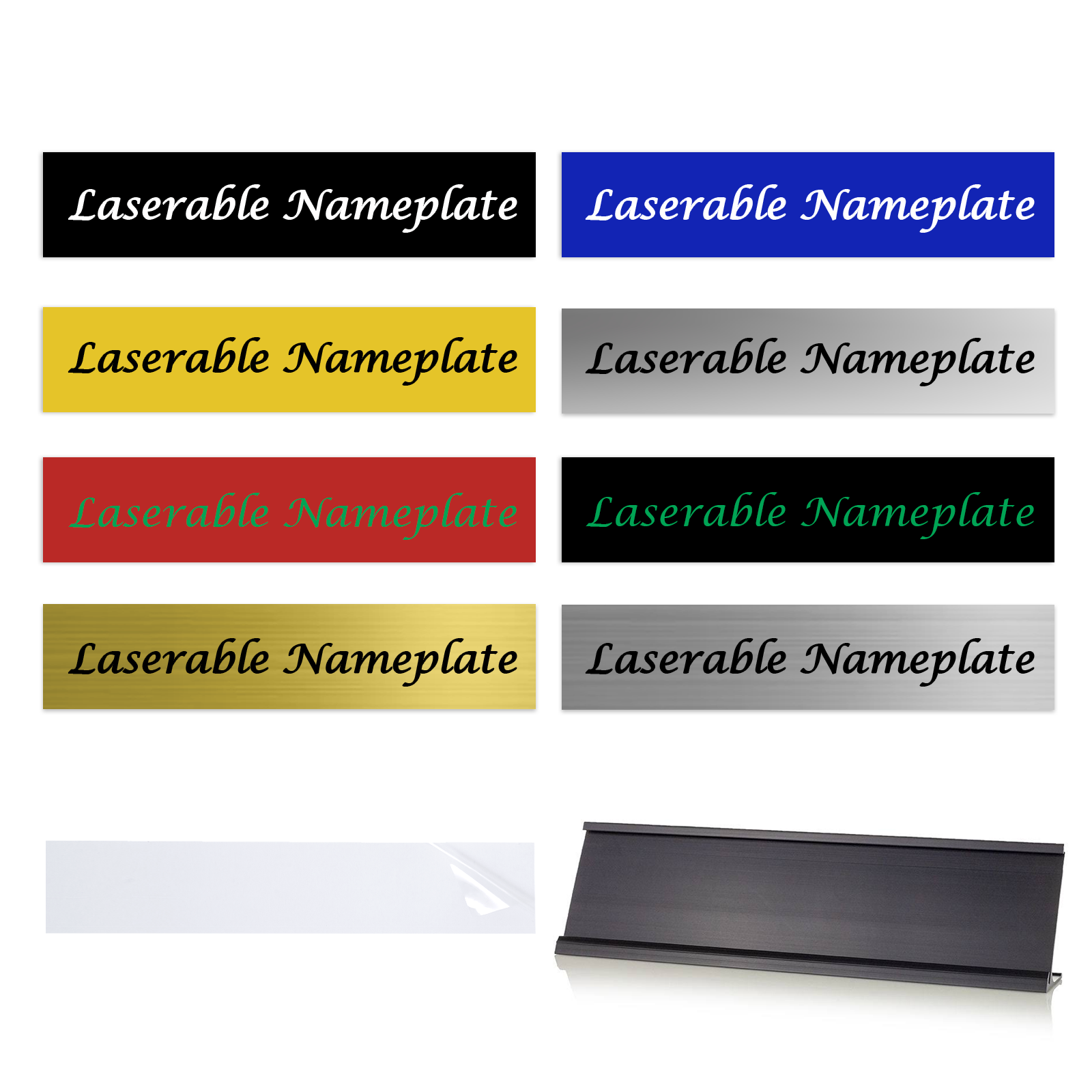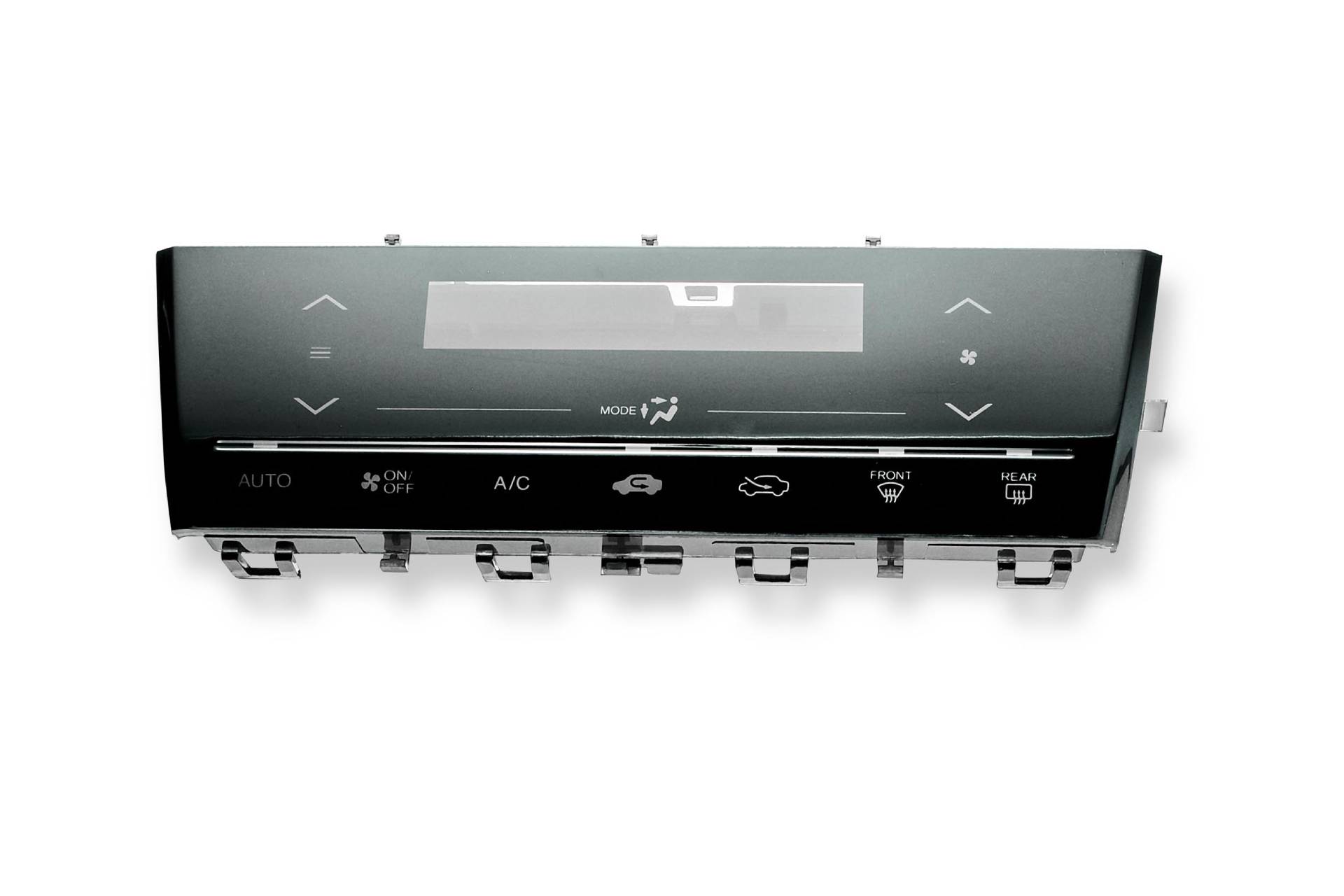Top 5 Industries That Rely on Plastic Nameplates for Daily Operations
How Plastic Nameplates Are Made: A Comprehensive Overview to Their Manufacturing Refine
The production of plastic nameplates involves a number of accurate actions, starting from the selection of appropriate materials to the last finishing touches. Each phase is important, ensuring the item satisfies specific requirements for sturdiness and appearances. Numerous production techniques play a substantial duty in crafting these nameplates. Understanding these processes can lose light on the intricacies behind what might appear like a basic item. What aspects add to the top quality and modification of these nameplates?
Comprehending Plastic Products Made Use Of for Nameplates

The Layout Refine: From Principle to Model
The style procedure for plastic nameplates starts with a clear idea that guides the overall production. Developers team up with clients to define the purpose, design, and particular requirements of the nameplate. This initial phase includes conceptualizing sessions, mapping out concepts, and choosing colors and font styles that straighten with branding goals.Once the idea is established, developers utilize computer-aided layout (CAD) software program to produce in-depth electronic representations. These models enable for visualization and modifications prior to progressing. Comments from stakeholders is integral during this phase, as it assists refine the style to fulfill expectations.After finalizing the electronic model, a physical design might be created, usually with methods like 3D printing. This substantial representation enables additional assessment of aesthetics and capability. On the whole, the style procedure is an essential action that lays the foundation for the reliable production of high-grade plastic nameplates.
Reducing and Shaping the Plastic
In the cutting and forming stage of plastic nameplate manufacturing, the selection of materials plays a vital function in figuring out the last product's quality and durability (Plastic Nameplates). Various precision reducing techniques, such as laser cutting and CNC machining, assurance that the plastic is formed with precision and uniformity. This mix of cautious material selection and advanced cutting approaches is crucial for producing premium nameplates

Material Selection Refine
Choosing the right product is crucial for generating high-grade plastic nameplates. Various kinds of plastics are readily available, each offering distinctive benefits and attributes. Typical selections include acrylic, polycarbonate, and PVC. Acrylic is preferred for its clearness and UV resistance, making it optimal for outside applications. Polycarbonate, recognized for its toughness and effect resistance, appropriates for atmospheres that need boosted protection. PVC is frequently picked for its cost-effectiveness and flexibility in style. The option procedure likewise considers factors such as surface, color, and thickness coating, which can greatly affect the final appearance and performance of the nameplate. Ultimately, the picked product must line up with the intended use and aesthetic objectives of the plastic nameplate.
Accuracy Trimming Techniques
While selecting the appropriate material lays the foundation, accuracy reducing methods play a vital duty fit the plastic nameplates into their final forms. Numerous approaches, consisting of laser cutting, CNC milling, and pass away reducing, are employed to accomplish accuracy and uniformity. Laser reducing makes use of concentrated light to generate detailed layouts and clean sides, suitable for intricate patterns. CNC milling supplies versatility by eliminating excess product with accuracy, accommodating various densities and shapes. Die reducing, on the various other hand, permits mass production of consistent items, enhancing performance. Each method is picked based on the style requirements and the preferred finish, guaranteeing that the final product satisfies top quality requirements and consumer assumptions while maintaining longevity and visual allure.
Printing Strategies for Customization
Exactly how can suppliers attain specific and dynamic designs on plastic nameplates? The response exists in various printing strategies tailored for personalization. Digital printing has acquired appeal as a result of its ability to produce high-resolution images and elaborate layouts straight onto plastic surface areas. This technique permits for fast turn-around times and very little setup expenses, making it suitable for brief runs and customized orders.Screen printing stays another commonly utilized technique, particularly for larger quantities. It involves producing a pattern and using layers of ink, resulting in abundant shades and resilience. UV printing, which utilizes ultraviolet light to heal the ink, is additionally efficient, giving exceptional adhesion and resistance to fading.Additionally, pad printing provides flexibility for irregularly shaped nameplates, enabling in-depth layouts on tough surfaces. These printing techniques allow manufacturers to meet varied customer requires while guaranteeing top quality and longevity in their plastic nameplate products.
Surface Area Therapies and Finishing Options

High Quality Control Actions in Production
Assuring the highest requirements of high quality control throughout the production of plastic nameplates is important for keeping item honesty and consumer complete satisfaction. Suppliers execute rigorous evaluation procedures at various stages of the manufacturing process. Initially, raw products go through thorough testing to validate they meet specs for toughness and shade uniformity. During the molding phase, automated systems check specifications such as temperature and pressure to avoid defects.In enhancement, aesthetic inspections are carried out to identify any type of surface imperfections or misalignments. As soon as the nameplates are created, they are subjected to practical examinations, including attachment tests for published components and cardiovascular test for toughness. Quality control groups often use analytical sampling techniques to evaluate sets, seeing to it that any discrepancies from standards are quickly addressed. This thorough approach not just improves item quality but additionally fosters Continue trust with clients, affirming the supplier's dedication to excellence in every nameplate created.
Product packaging and Circulation of Finished Nameplates
The product packaging and distribution of finished plastic nameplates are critical action in ensuring they reach customers in excellent problem. Numerous packaging materials are picked to secure the nameplates during transit, while delivering methods are meticulously picked based upon efficiency and cost-effectiveness. Additionally, efficient storage solutions are executed to keep high quality up until the nameplates are provided.
Product Packaging Products Used
When distributing completed Full Report plastic nameplates, choosing proper packaging materials is vital to ensure their security during transportation. Commonly utilized materials consist of bubble cover, foam padding, and cardboard boxes, all designed to cushion the nameplates versus effects and shocks. Bubble wrap offers a flexible barrier, while foam extra padding warranties that nameplates stay safely in position, minimizing the danger of scratches or breakage. In addition, durable cardboard boxes are made use of to contain the nameplates, providing structural support and protection from outside elements. Tags might be applied to indicate handling instructions or breakable contents, better enhancing security during transportation. Generally, using high-quality packaging materials considerably adds to the integrity and presentation of the finished plastic nameplates upon arrival at their destination.
Delivering Techniques Utilized
Reliable distribution of ended up plastic nameplates relies upon numerous delivery methods that assure timely and safe and secure distribution. Firms commonly use courier services, products shipping, and postal solutions, relying on the dimension, weight, and location of the plans. For regional deliveries, copyright solutions supply quick transit, making certain nameplates get to consumers quickly. For bigger orders, products shipping is preferred, using trucks or shipping containers to deliver mass amounts effectively. Post offices function as an affordable choice for smaller sized deliveries, specifically for domestic shipments. All shipping techniques prioritize safety product packaging to prevent damage throughout transportation. Tracking systems are likewise used to monitor shipments, giving customers with real-time updates and confidence concerning the standing of their orders.
Storage Solutions Implemented

Regularly Asked Concerns
What Sorts Of Organizations Generally Utilize Plastic Nameplates?
Plastic nameplates are frequently utilized by various services, including workplaces, health centers, schools, and factories. These nameplates serve crucial functions such as identification, information display screen, and branding, contributing to organizational effectiveness and professional appearance throughout varied settings.
How much time Does the Entire Production Process Take?
The manufacturing process duration varies based on intricacy and amount, usually ranging from a couple of days to numerous weeks. Variables influencing this timeline include layout authorization, material availability, and manufacturing methods used by the business.
Can Plastic Nameplates Be Recycled After Use?
Plastic nameplates can be recycled, provided they are made from recyclable products. The accessibility of reusing programs and local guidelines might impact their recyclability. Correct disposal practices are necessary to assure effective recycling.
What Are the Environmental Effects of Plastic Nameplate Production?
The ecological influences of plastic nameplate production consist of carbon emissions, resource depletion, and contamination from manufacturing processes. Plastic Nameplates. In addition, improper disposal contributes to plastic waste, adversely affecting ecological communities and wild animals, highlighting the demand for lasting practices
Are There Any Security Interest In Plastic Nameplates?
Safety worries pertaining to plastic nameplates primarily entail possible chemical direct exposure throughout manufacturing and the threat of products degrading with time, which might cause dangerous substances being launched, influencing both human health and the environment. While various materials can be made check my site use of for nameplates, plastic remains a preferred option due to its flexibility and durability. In the cutting and shaping phase of plastic nameplate production, the selection of materials plays a necessary function in figuring out the final item's high quality and durability. Picking the ideal material is vital for creating top quality plastic nameplates. While choosing the ideal material lays the foundation, precision cutting strategies play a necessary role in forming the plastic nameplates into their final kinds. When dispersing completed plastic nameplates, choosing proper packaging products is essential to ensure their protection during transportation.